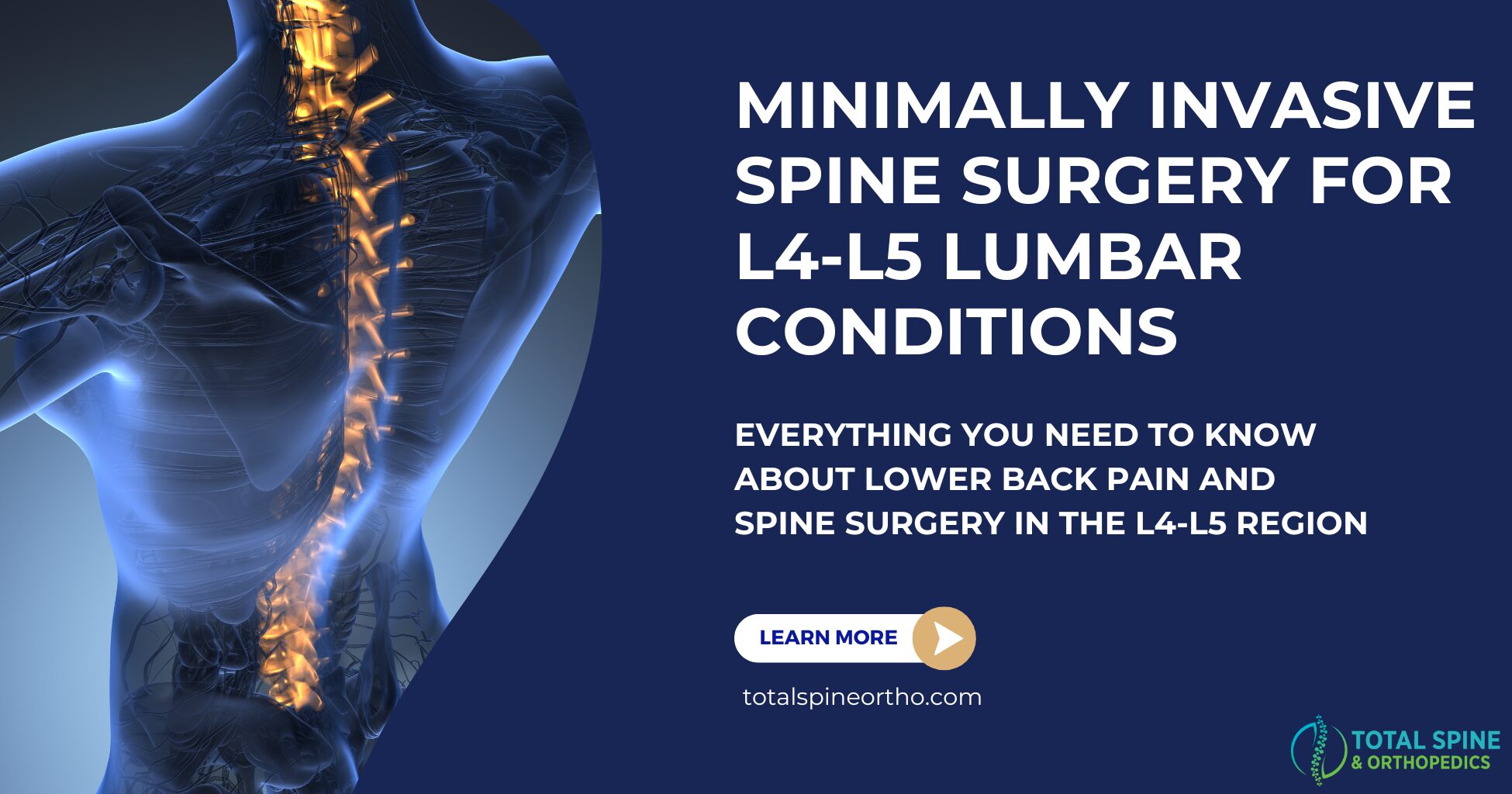Lower back pain is a widespread issue that affects people of all ages and lifestyles. One of the most frequently impacted areas is the L4-L5 segment of the lumbar spine. This region is responsible for bearing much of the body’s weight and allows for a wide range of motion, from bending and twisting to supporting our posture and gait. When problems arise at L4-L5, they can lead to significant discomfort and limit everyday activities.
Minimally invasive spine surgery (MISS) has become a game-changer in managing lumbar spine conditions. Through advanced tools and techniques, surgeons can target spinal issues with less damage to surrounding tissues, resulting in faster recovery times and improved outcomes. This guide focuses on minimally invasive spine surgery in the L4-L5 region, helping you understand what to expect and how to decide if it’s right for you.
Understanding the L4-L5 Region
The lumbar spine consists of five vertebrae (L1 through L5), with the L4-L5 level sitting just above the base of the spine. Because it supports the upper body’s weight while allowing for a high degree of movement, this area is prone to stress and wear over time.
Nerves exiting the spine at L4-L5 play a key role in motor control and sensation. Compression or irritation here can lead to sciatica-like symptoms, including pain or numbness radiating down the leg. The L4 nerve root often influences knee extension and sensation in parts of the thigh, while the L5 nerve root is linked to foot and toe movement (including dorsiflexion) and sensation along the top of the foot. When something goes wrong at L4-L5, it can significantly affect mobility, strength, and overall quality of life.
Common Conditions Affecting L4-L5
Herniated Disc
One of the most common issues in the L4-L5 region is a herniated disc. This happens when the softer inner layer of a spinal disc pushes through a tear in the tougher outer layer, placing pressure on nearby nerve roots. Typical symptoms include sharp, shooting pain in the lower back, numbness in the foot or leg, and in some cases, muscle weakness that can lead to foot drop.
Spinal Stenosis
Spinal stenosis involves the narrowing of the spinal canal, which puts pressure on the nerves. At L4-L5, stenosis is often due to degenerative changes like bone spurs, thickened ligaments, or bulging discs. Patients may experience pain, numbness, or cramping in the legs, often relieved by sitting or leaning forward.
Degenerative Disc Disease
With age or repetitive stress, the discs in the lumbar spine can begin to lose hydration and elasticity, leading to degenerative disc disease. At L4-L5, this can cause chronic low back pain, stiffness, and increased stress on nearby joints, potentially leading to nerve impingement and muscle spasms.
Spondylolisthesis
Spondylolisthesis refers to one vertebra slipping forward over the one below it, often at L4-L5. This slip can compress nerves, causing lower back pain, leg pain, and hamstring tightness. It may result from degenerative changes, injury, or a congenital defect.
What Is Minimally Invasive Spine Surgery?
Minimally invasive spine surgery uses specialized instruments, small incisions, and often real-time imaging to address spinal problems. Instead of large cuts and extensive muscle dissection required in traditional open surgery, MISS techniques focus on preserving as much healthy tissue as possible. Surgeons typically rely on tubular retractors, endoscopes, or microscopes to view the operative field, thus causing less trauma to muscles and surrounding structures.
Benefits of Minimally Invasive Procedures
Minimally invasive spine surgery offers a range of advantages over traditional open surgery:
- Smaller Incisions: Reduced scarring and lower infection risk.
- Less Blood Loss: Often no need for blood transfusions.
- Minimal Muscle Damage: Faster healing and less postoperative pain.
- Quicker Recovery: Many procedures allow patients to go home the same day or the next day.
- Lower Reliance on Pain Medications: Faster return to daily activities and lower risk of complications.
The Minimally Invasive Surgery Process
Preoperative Assessment
Before surgery, your medical team will review your health history, conduct a physical exam, and order imaging tests such as MRI or CT scans to pinpoint the exact cause of your L4-L5 issue. Additional tests like electromyography (EMG) may be done to assess nerve function.
Surgical Procedures
Depending on your diagnosis, your surgeon may recommend one of several minimally invasive procedures. For a herniated disc, a procedure such as a minimally invasive fusion or endoscopic spine surgery may be an option. If you have spinal stenosis, a laminectomy may be performed to remove part of the vertebra and enlarge the spinal canal. In cases of instability, a minimally invasive fusion could stabilize the vertebrae without large incisions or extensive muscle retraction.
Throughout these procedures, surgeons use high-tech guidance systems, such as endoscopic cameras or intraoperative X-rays, to navigate through small incisions with precision.
Recovery and Rehabilitation
Recovery from MISS at L4-L5 tends to be faster than traditional surgery, but it’s still important to follow your postoperative plan closely. Pain management typically involves over-the-counter medications or short-term prescription pain relievers. You’ll be encouraged to begin gentle activities like walking as soon as possible to promote blood flow and healing.
Physical therapy usually starts a few weeks after surgery and may include exercises designed to strengthen the core, improve flexibility, and correct posture. Your surgeon will provide detailed instructions about when you can resume work, sports, and other activities. Regular follow-up appointments help monitor your progress and make any necessary adjustments to your treatment plan.
Is Minimally Invasive Surgery Right for You?
You might be a good candidate for minimally invasive spine surgery if conservative treatments like medication, physical therapy, or epidural injections haven’t provided sufficient relief. Ideal candidates generally have a specific, well-defined spinal problem—such as a herniated disc or spondylolisthesis at L4-L5—and are in overall good health.
It’s crucial to weigh the benefits and potential risks, such as infection or hardware complications, although these are relatively low. A thorough consultation with a spine specialist such as our team at Total Spine will help you decide whether MISS aligns with your goals, lifestyle, and medical needs.
If you’re living with ongoing lower back pain or related symptoms in the L4-L5 region, you can reach out to our team of spine experts by filling out the form at the bottom of this page or calling (321)-499-4646 for a comprehensive evaluation. We’re here to help you explore whether minimally invasive spine surgery is the right option to help you move more freely and live more comfortably.
Disclaimer: This article is intended for informational purposes only and does not substitute professional medical advice. Consult a qualified healthcare provider for an accurate diagnosis and personalized treatment plan.


